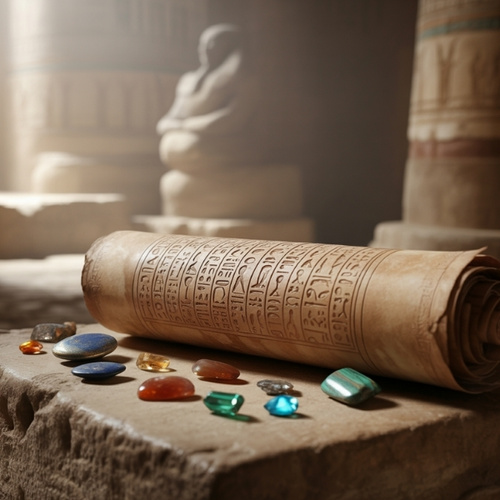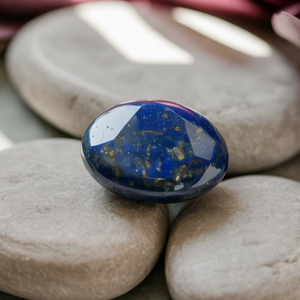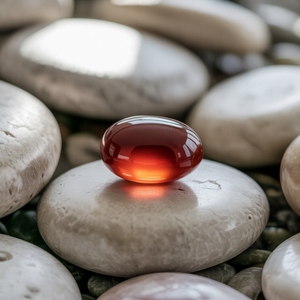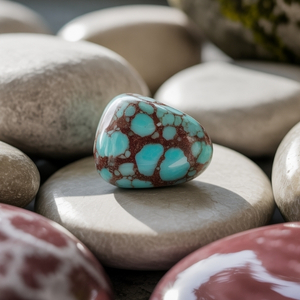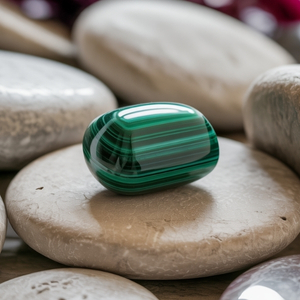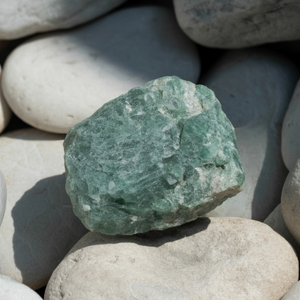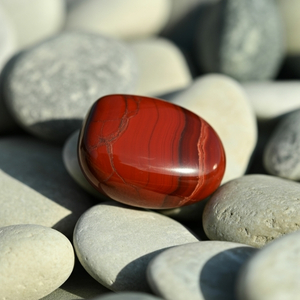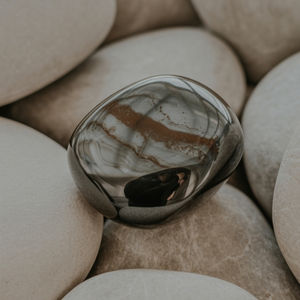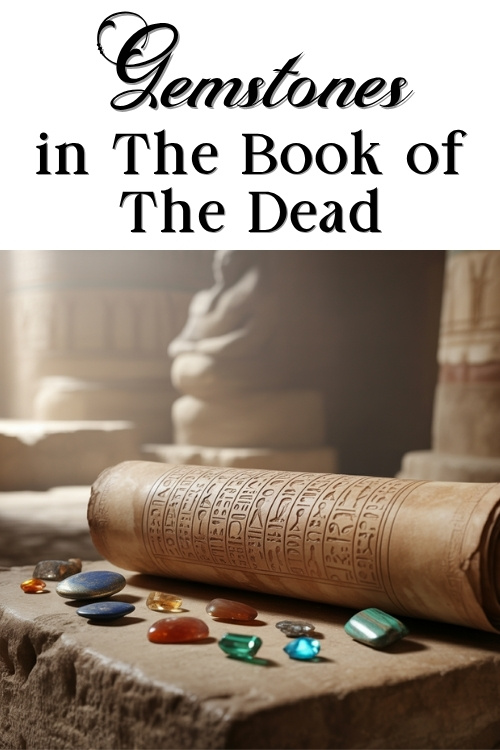Estimated reading time: 5 minutes
For the ancient Egyptians, death wasn’t seen as an ending, it was simply stepping into the next chapter of existence. To make sure that journey went smoothly, tombs were carefully stocked with protective amulets, sacred texts, and symbolic treasures. Among the most meaningful of these was The Book of The Dead.
The Egyptian Book of the Dead was a scroll filled with spells and instructions to help the deceased navigate their way through the underworld. While no two scrolls were the same, certain gemstones appear time and again. Let’s take a closer look at a few of the stones that held such significance in this mystical journey.
Jump to:
Lapis Lazuli: The Stone of the Gods
Known in Egyptian texts as khesbed, lapis lazuli was considered one of the most sacred stones of all. Its deep blue colour was thought to link mortals with the divine, which is why it often appeared in amulets shaped like the Eye of Horus. These amulets weren’t just decorative, they were thought to offer protection and insight.
The Book of the Dead instructed that a lapis lazuli amulet should be placed on the neck of the deceased, calling on the favour of the gods to guide them safely through the afterlife.
Carnelian: The Essence of Life
Bright, fiery carnelian symbolised vitality and strength. Egyptians often carved it into the Tet amulet, a symbol tied to Osiris, the god of resurrection.
With its red-orange glow, carnelian was believed to breathe life-force into the wearer, ensuring they had energy and protection for their eternal journey.
Turquoise: A Gift from Hathor
Known as mehenet, turquoise carried the joyful blessing of Hathor, the goddess who guarded the dead.
It was a popular choice for burial jewellery, its soft blue-green hues promising happiness, divine favour, and safe passage into the celestial realm.
Malachite: The Green Fields of Eternity
Malachite, with its striking bands of green, symbolised renewal and paradise.
The afterlife was sometimes described as the Field of Malachite. A fertile, eternal landscape where the soul could rest. This stone represented healing and peaceful transition, a reminder that life continued on in greener pastures.
Green Feldspar: The Heart’s Guardian
Green feldspar (possibly what we know today as amazonite) may not be as famous as lapis or turquoise, but it played a vital role. It was often carved into heart scarabs and placed over the chest of the deceased.
During the Weighing of the Heart ceremony, the heart was judged against the feather of Ma’at (truth). The stone’s magic was meant to silence the heart, keeping it from betraying its owner and helping secure a favourable verdict.
Red Jasper: Strength and Protection
Linked to Osiris, red jasper was all about resilience.
Its deep red tones were thought to give the deceased the strength to face challenges in the underworld, while also shielding them from harm. Many spells in the Book of the Dead mention this stone’s protective qualities.
Obsidian: A Shield Against Evil
Although not as frequently mentioned in the scrolls, dark stones like obsidian were valued for their protective nature.
Obsidian was believed to absorb negativity, and it was sometimes used for the eyes of statues or funerary masks, so that the watchful gaze of protection could follow the soul into the afterlife.
A Legacy of Sacred Stones
To the Egyptians, gemstones were far more than decorations, they were guardians, healers, and guides. Whether ensuring divine favour, offering strength, or symbolising eternal renewal, gemstones were woven into the very fabric of the afterlife.
Their legacy reminds us that the beauty of a gemstone has always gone hand in hand with its story, carrying meanings that reach far beyond its sparkle.
Quick side note – Gemstone history makes great marketing content, so feel free to share it with your audience!
🔗 Want some guidance on using gemstone knowledge to market your jewellery business? Read Using Gemstone Knowledge to Boost Your Jewellery Sales
🔗Interested in other ways ancient Egyptians used gemstones? Try reading The bread of Osiris (coming soon)
📌Don’t forget to save this blog post so you can find it again later on!

